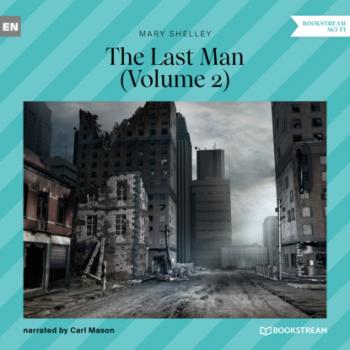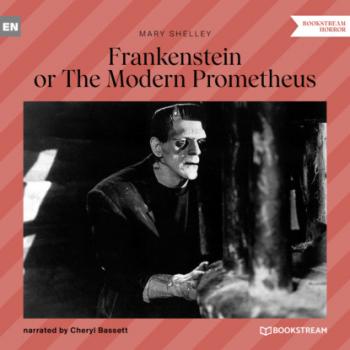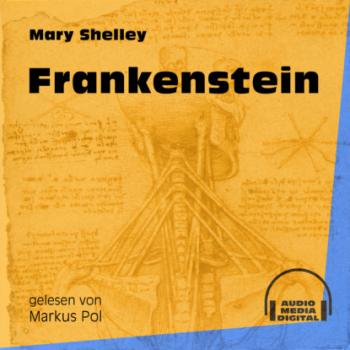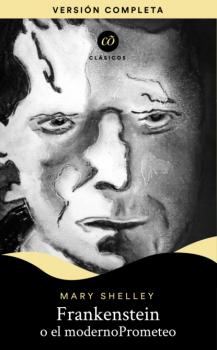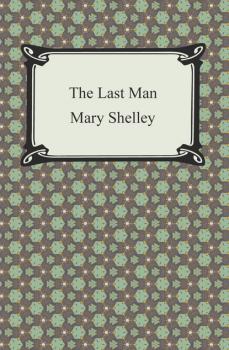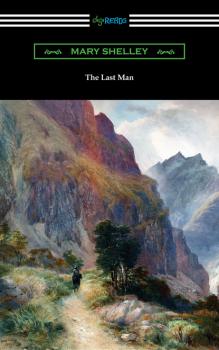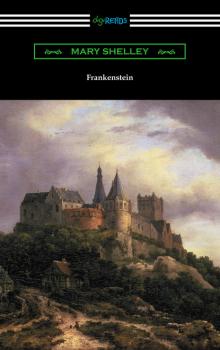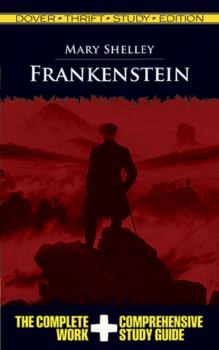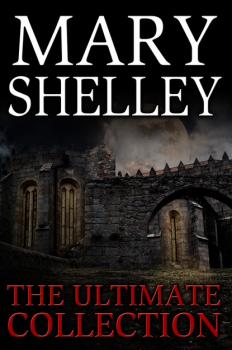ТОП просматриваемых книг сайта:
Mary Shelley
Список книг автора Mary ShelleyАннотация
A mediados del siglo XVIII, un hombre juega con la idea de la creación de la vida. Es cuando crece y va a la universidad, que lleva a cabo un experimento que helaría la sangre a cualquiera: dar vida a restos de cuerpos que alguna vez respiraron. Asustado por el monstruo que acababa de parir, Frankenstein huye y lo deja solo. La historia se divide en los relatos del creador y su deseo por olvidar su terrible experimento; y la historia del monstruo, a quién no se le da nombre, y su deseo por encontrarse con Frankenstein y obtener respuestas sobre su amarga existencia. A lo largo de estos relatos, un sin fin de tragedias llenarán la vida de ambos, para así llegar a un trágico final.
Considerada como la primera novela de ciencia ficción, Frankenstein logrará dividirte con diferentes sentimientos, como la tristeza, el amor, el enojo y la empatía. Por lo que llegarás a cuestionarte, quién es el verdadero monstruo en esta historia: aquel que, desconsideradamente ha creado algo espantoso, y de misma forma lo ha condenado a una vida de soledad, o aquella criatura que, naciendo «buena» (incluso haciendo mención a la Teoría del buen salvaje de Rousseau), es obligada a convertirse en ser malvado y lleno de odio, a la falta de comprensión y compasión de los humanos.
Considerada como la primera novela de ciencia ficción, Frankenstein logrará dividirte con diferentes sentimientos, como la tristeza, el amor, el enojo y la empatía. Por lo que llegarás a cuestionarte, quién es el verdadero monstruo en esta historia: aquel que, desconsideradamente ha creado algo espantoso, y de misma forma lo ha condenado a una vida de soledad, o aquella criatura que, naciendo «buena» (incluso haciendo mención a la Teoría del buen salvaje de Rousseau), es obligada a convertirse en ser malvado y lleno de odio, a la falta de comprensión y compasión de los humanos.
Аннотация
Mary Shelley (1797-1851) was a British novelist, short story writer, dramatist, essayist, biographer and travel writer, whose gothic style and progressive ideas have made a permanent fixture in literary history. Daughter of political philosopher William Godwin and feminist Mary Wollstonecraft, Mary Shelley quickly developed ideas about female independence, sexual freedom and how to compromise in the face of nineteenth century English convention. Her 1826 novel, «The Last Man», reflects Shelley's fears about civilization and the shortcomings of human behavior. The narrator discovers a prophetic manuscript, written in 2100 by the last survivor of a twenty-first century apocalypse, which recounts how a deadly plague spread throughout Europe and the world. The scribe, Lionel Verney, describes a world that is both fantasy, and a reflection of Shelley's reality. She used this novel to scrutinize the machinations of politics and philosophy, and reflect upon pitfalls of human behavior – selfishness, brutality, pride – that she saw in the world around her.
Аннотация
Mary Shelley was a British novelist, short story writer, dramatist, essayist, biographer, and travel writer, whose gothic style and progressive ideas have had a permanent influence on literary history. Daughter of political philosopher William Godwin and feminist Mary Wollstonecraft, Mary Shelley quickly developed ideas about female independence, sexual freedom, and how to compromise in the face of nineteenth century English convention. Her 1826 novel, “The Last Man”, reflects Shelley’s fears about civilization and the shortcomings of human behavior. The narrator discovers a prophetic manuscript, written in 2100 by the last survivor of a twenty-first century apocalypse, which recounts how a deadly plague spread throughout Europe and the world. The scribe, Lionel Verney, describes a world that is both fantasy, and a reflection of Shelley’s reality. She used this novel to scrutinize the machinations of politics and philosophy, and reflect upon pitfalls of human behavior—selfishness, brutality, pride—that she saw in the world around her. This edition includes a biographical afterword.
Аннотация
Mary Shelley’s “Frankenstein” is the story of Victor Frankenstein, a young scientist who through a strangely unorthodox experiment creates a grotesque yet sentient being. Victor, repulsed by the thing that he has created, abandons the monster. The creature in turn saddened by this rejection, departs as well. What follows is a series of tragic events. There is no greater novel in the monster genre than “Frankenstein” and no more well known monster than the one that is at the center of this novel. However, the monster of “Frankenstein” is more than the common lumbering moronic giant that is most often represented. Frankenstein’s monster is in reality a thinking intelligent being who is tormented by a world in which he does not belong. In this depiction Shelley draws upon the universal human themes of creation, the nature of existence, and the need for acceptance. For it is without this acceptance that the true monster, the violent nature of humanity, emerges. This edition includes introductions by Sir Walter Scott and Mary Shelley, and a biographical afterword.
Аннотация
Obsessed with creating life in a laboratory, a medical student haunts graveyards and dissecting rooms in search of the materials for his experiments. But when he achieves success, he rejects his ghastly creation. The creature—longing for love but shunned by all—turns evil and exacts revenge. Two centuries after its initial publication, Frankenstein endures as a synonym for «monster.» The first modern horror novel as well as the first science-fiction novel, Mary Shelley's Gothic romance has intrigued generations of readers. A definitive survey, this Dover Thrift Study Edition offers the novel's complete and unabridged text, plus a comprehensive study guide. Created to help readers gain a thorough understanding of Frankenstein's content and context, the guide includes: • Chapter-by-chapter summaries• Explanations and discussions of the plot• Question-and-answer sections• Shelley biography• List of characters and more Dover Thrift Study Editions feature everything that students need to undertake a confident reading of a classic text, as well as to prepare themselves for class discussions, essays, and exams.
Mary Shelley: The Ultimate Collection (All 7 Novels including Frankenstein, Short Stories, Bonus Audiobook Links & More) - Mary Shelley
Аннотация
"There is something at work in my soul which I do not understand…"<br><br>Mary Shelley: literary queen of the Romantic era, deeply influenced by the Gothic tradition, and arguably the matriarch of the Science Fiction genre. Her works, though composed in the 1800s, contain elements straight out of today's headlines: the tension between what science can do vs. what it should do, cryonics, contagion, apocalypse and other dark futuristic themes. Shelley introduced the world to the first "mad scientist" character in her most popular work, Frankenstein, inspiring generations of horror stories, films, and comic books.<br><br>This collection includes:<br><br>Novels<br>Frankenstein, or the Modern Prometheus <br>Mathilda<br>The Last Man<br>Valperga<br>Lodore<br>Falkner<br>The Fortunes of Perkin Warbeck<br><br>Children's Literature<br>Proserpine & Midas<br><br>Short Stories<br>The Dream<br>The Mortal Immortal<br>The Evil Eye<br>The Invisible Girl<br>The Heir of Mondolfo<br>Transformation<br><br>Non-Fiction<br>Notes to the Complete Poetical Works of Percy Bysshe Shelley<br><br>Biography<br>Mrs. Shelley by Lucy Madox Rosetti<br><br>Audiobook Links: Links to download free, full-length audiobooks for some of Mary Shelley's works can be found at the end of the book.<br><br>About this Digital Papyrus edition<br><br>"Experience the Digital Papyrus Difference!"<br><br>We are devoted book lovers and formatting fanatics. Our team has experience producing thousands of ebooks since 2011 for discerning authors and readers alike. We know what readers expect from their ebook purchases. We avoid distracting formatting inconsistencies and annoying glitches too often found in ebooks. <br><br>We adhere to the highest standards in producing our ebooks–regardless of the sale price. (Low or value pricing should never be an excuse for second-rate work!)<br><br>We want readers of our ebooks to get lost in the story just as easily as readers of print books. Our promise is a pleasant reading experience. <br><br>10% of all Digital Papyrus profits are donated to charity every month.

